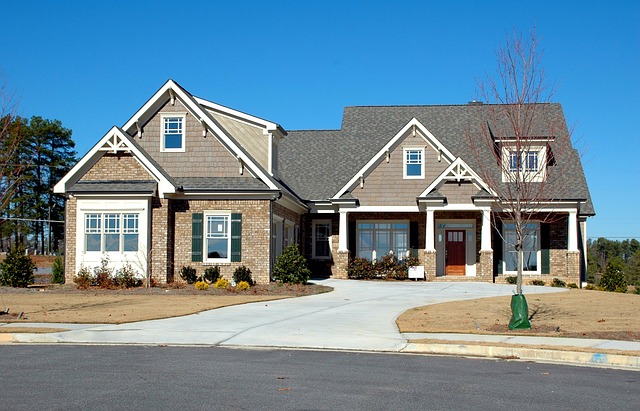
There are some types of home improvement that you can postpone for later. However, a leaky roof isn’t one of these types. Broken, bent or fallen shingles demand repair right-away. If you ignore the problem, water leakage can get out of hand and lead to major roof damage, making your energy savings vanish for good.
We test and review asphalt shingles roofs thoroughly, as they are one of the most common and popular types of roofing. Our findings reveal that not only functionality varies among manufacturers, but also among various product collections offered by each brand.
So here is how you can tell if you need a new roof – from examining the degree of leakage to finding out whether missing shingles are becoming an issue and what to watch out for when you are getting a new roof. In the present guide, we’ll navigate you through the most commonly used roofing options, their average cost, and their average life spans.
How To Know If You Need A Roof Replacement
Water stains on a ceiling’s surface and water dripping may leave you wondering if your entire roof is damaged. However, a single leak or stain doesn’t necessarily imply that your roof needs separately a huge number of fixing tasks. In some cases, you can stop the issue by just filling in a shatter with caulk or switching a few shingles, or even attaching some flashing – a metal layer that serves as a mechanical shielder to transfer water to gaps, corner, crevices, and other areas that are prone to leakage.
Fallen tree branches and storms may also cause shingles to fall off. Broken flashing is also another cause of damage. Even rubber boots surrounding the hydraulic pipes or poorly attached satellite antennas or solar panels can lead to leakage in certain spots. To find out the type of leakage you have, begin to detect its source first.
Watching Out For Leaks
It’s easier to spot signs of leakage when you are outside your home. Keep in mind that water often collects in a spot that is different from the one that it got in – it typically runs through the surface of a stud or rafter and drips once it hits a low spot.
In an uncompleted loft, the framing is exposed and so it’s best to check through the length of any wooden framing that connects to that point, to find out if you see a stream of water that comes from a higher level of your roof. If your attic is incomplete, you need to use a jab or similar handheld tool to trim away any drywall that hinders your optical scope. Once you have traced the source, examine the top layer of your roof to see if you can find some common causes of damage e.g fallen/missing shingles or damaged flashing close to the chimney spot.
If you can’t trace the source of the leakage, it’s best to hire a qualified roofing expert to check the roof and guide you on whether your roof needs fixing or full replacement. Even in case, you can trace your own leak spots, it’s best to leave the fixing matter to the hands of an expert. Jumping onto your roof with a long ladder is very risky for an amateur. Most leaks, however, can be fixed if they only occur in a few random spots. If, on the contrary, you encounter repeat leaks and your roof’s warranty has expired, it’s best to get a new roof. All the cash you would spare on getting various short-term repairs will be more than getting an entire roof with a lasting warranty.
Other Warning Indicators
There is no need to wait for leaking spots to occur before you contemplate making fixes to your roof. Broken, bent, or missing shingles are all signs of worsening leakage. Your roof’s age could serve as a tell-tale guide here. In most cases, insurance firms estimate that an asphalt shingle roof will last for 20 years, and some insurance companies will not cover the fees if your roof’s age is older e.g. in case a previous owner has installed it many decades ago. In this case, a roofing expert can give you a rough estimate of its age, by examining the state of the shingles.
Even if you don’t notice any apparent signs of damage, it is totally reasonable to get a new roof that has passed its warranty period and is more than two decades old. The reason why is because, once a leak forms, it can cause major damage to the wood layer that lies under the shingles. If this wooden layer gets rotted or warped, getting a new one will cost you thousands of bucks more than a mere new roof installation. The images below illustrate the various roofing layers comprising a new roof.
Insurance Company Coverage
Before hiring any roofing expert to do all the necessary fixing or replacement work, you better contact your insurance company to find out the coverage scope for roof fixes or a new roof. You ideally want to calculate your upfront fixing costs against the cost of getting a new roof altogether. Include any estimated rise in your premium as well–it is sometimes more reasonable to simply bear the expenses yourself.
In most cases, homeowner’s insurance contracts will cover fully or partially the cost of isolated repairs but they won’t bear the cost of a new roof. Most companies will give you an adjuster to offer a rough estimate for the fixes and their contracts usually cover the fixing work, as well as any impairment to the drywall, framing, or flashing that, originates from a leaking roof. If you manage to get a payout from your insurer, you may use these funds to do the specific fixes or allocate them towards the costs of an entire roof replacement.
